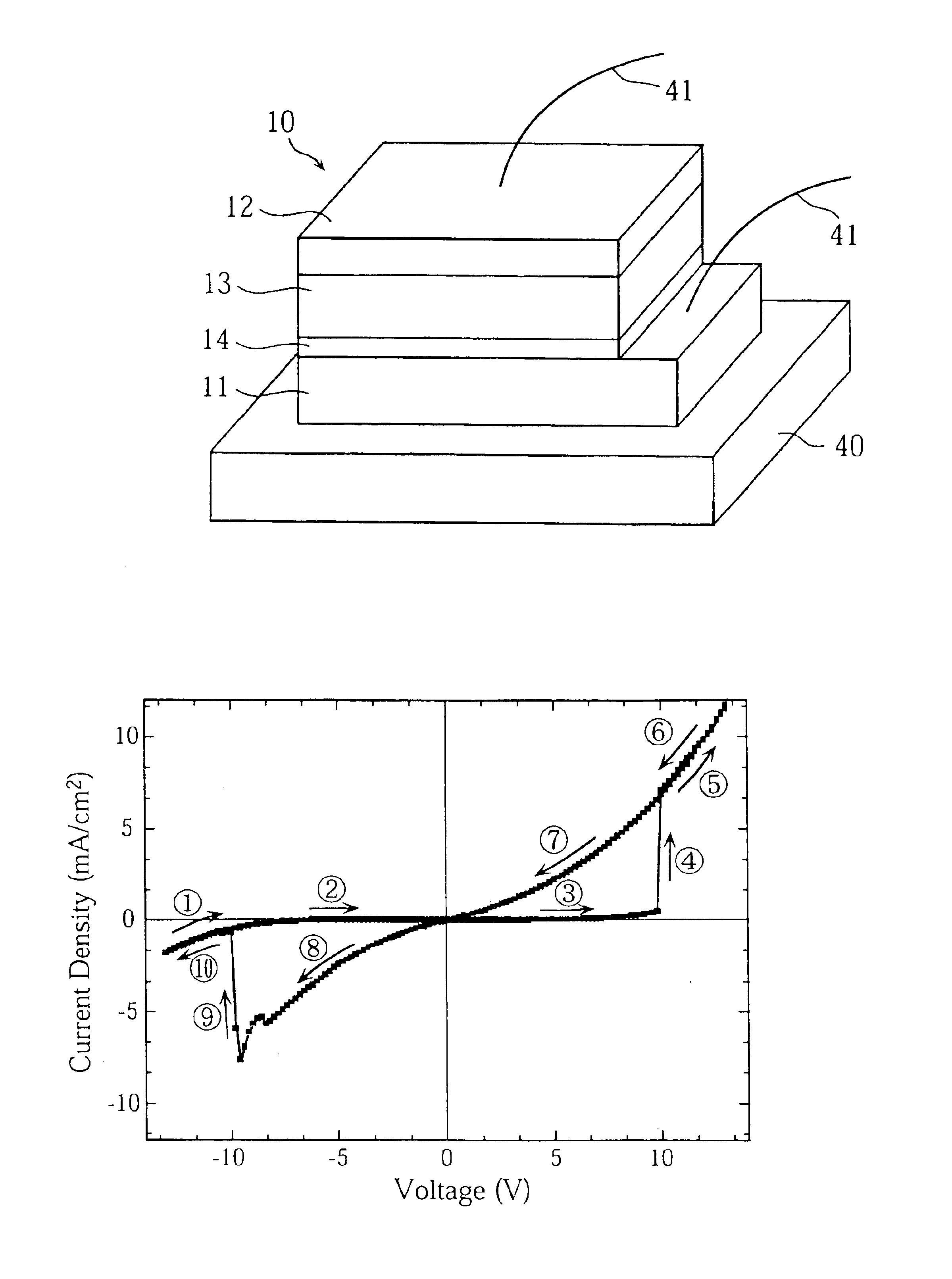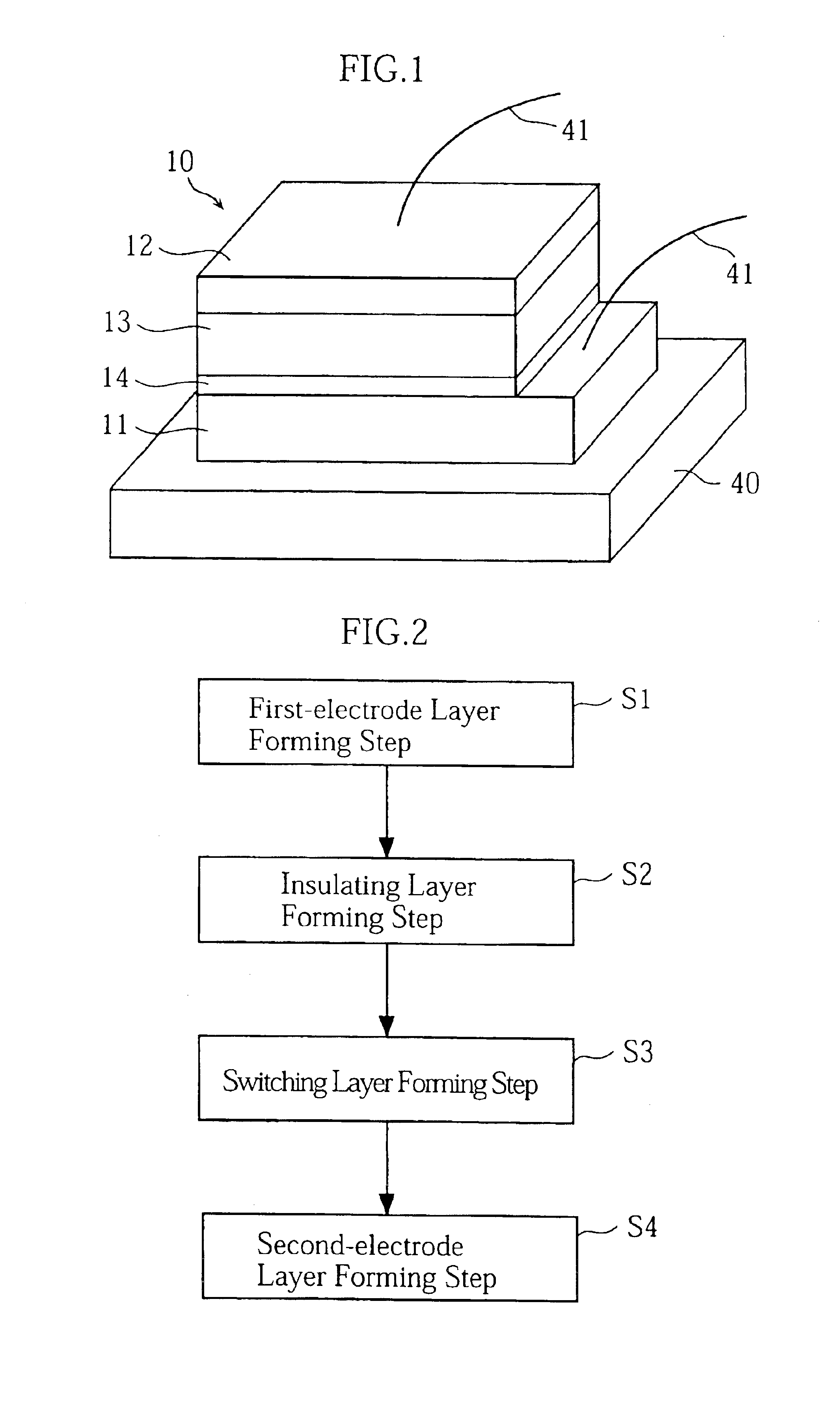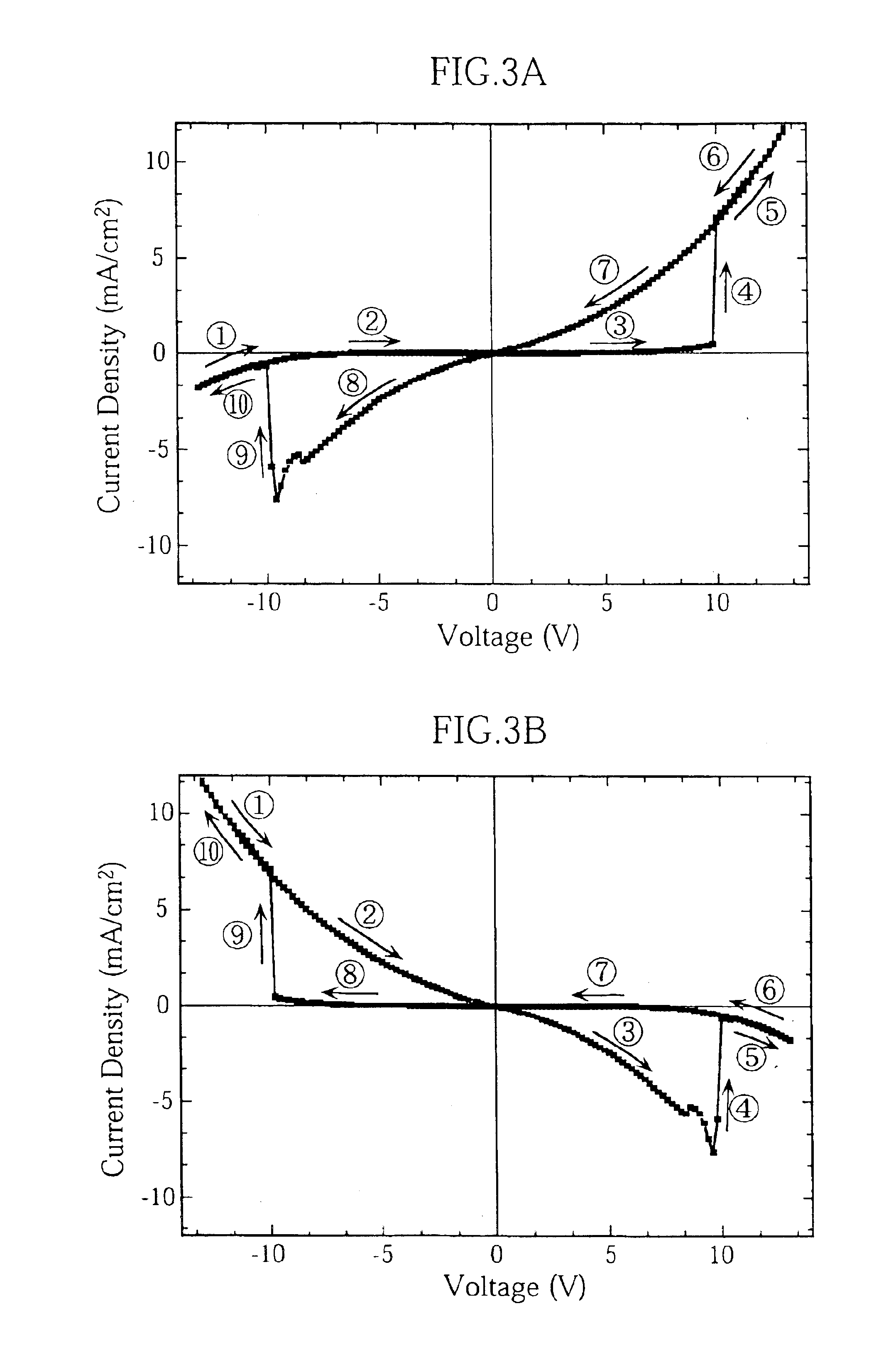Switching element and method of making the same
a technology of switching element and film, applied in the field of switching element, can solve the problems of low film uniformity, unknown switching mechanism, and concomitant trend of increasing component density
- Summary
- Abstract
- Description
- Claims
- Application Information
AI Technical Summary
Benefits of technology
Problems solved by technology
Method used
Image
Examples
embodiment 1
[Embodiment 1]
A glass substrate (10.times.10.times.1 mm; manufactured by Matsunami Glass Ind., Ltd,) on which an ITO layer (300 nm thickness) was formed in advance, was mounted to a copper substrate specifically made for a vapor depositing apparatus (Vapor Depositing Apparatus E100 for Organic EL Research and Development; manufactured by Advanced Lab Systems Co., Ltd), and then set to a substrate holder in the chamber of the apparatus. A tungsten spiral boat loaded with approximately 1 gram of Al (manufactured by Nilaco Corporation) was connected to the electrode in the chamber. Next, pressure inside the chamber was reduced, and under the vacuum range between 3 to 4.times.10.sup.-3 Pa, Al was vaporized and deposited on the substrate. The depositing rate was 1 to 1.5 .ANG. / sec and the deposition was continued to a thickness of 20 nm. Thereafter, the pressure in the chamber was returned to the normal atmospheric pressure, and using a UV ozone cleaner (manufactured by Nippon Laser & El...
embodiments 2 and 3
[Embodiments 2 and 3]
Switching elements were made in the same way as in Embodiment 1, except that the Cu and TCNQ deposition ratio was changed to 1:2 (for Embodiment 2) and 3:2 (for Embodiment 3). The element structures of Embodiments 2 and 3 are given in FIG. 12. These switching elements were also subjected to the same aging process and the J-V measurement as was Embodiment 1, and J-V characteristic curves showing a similar switching characteristic to that of Embodiment 1 were obtained. These switching functions were reproducible over 100 cycles.
[Reference 1]
A switching element was made in the same way as in Embodiment 1, except that the Cu and TCNQ deposition ratio was changed to 0:1. The element structure of this reference is given in FIG. 12. The switching element was also subjected to the same aging process and the J-V measurement as was Embodiment 1. No switching function was observed. A J-V characteristic curve obtained for this reference is shown in FIG. 15.
[References 2 and...
embodiments 4 through 6
[Embodiments 4 through 6]
Switching elements were made in the same way as in Embodiment 1, except that the thickness of the switching layer (Cu-TCNQ thin film) was changed to 50 nm (for Embodiment 4), 200 nm (for Embodiment 5), and 300 nm (for Embodiment 6). The element structures of Embodiments 4 through 6 are given in FIG. 12. These switching elements were also subjected to the same aging process and the J-V measurement as was Embodiment 1, and J-V characteristic curves showing a similar switching characteristic to that of Embodiment 1 were obtained. These switching functions were reproducible over 100 cycles.
PUM
 Login to View More
Login to View More Abstract
Description
Claims
Application Information
 Login to View More
Login to View More - R&D
- Intellectual Property
- Life Sciences
- Materials
- Tech Scout
- Unparalleled Data Quality
- Higher Quality Content
- 60% Fewer Hallucinations
Browse by: Latest US Patents, China's latest patents, Technical Efficacy Thesaurus, Application Domain, Technology Topic, Popular Technical Reports.
© 2025 PatSnap. All rights reserved.Legal|Privacy policy|Modern Slavery Act Transparency Statement|Sitemap|About US| Contact US: help@patsnap.com



